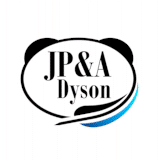The first three steps to finding a literary agent

By Jill Nagle
Founder and Principal: GetPublished, guerilla guidance for your writing adventure
firstwriter.com – Sunday October 24, 2004
An excerpt from How to Find A Literary Agent Who Can Sell Your Book for Top Dollar
www.FindTheRightAgent.com
Congratulations – you have a manuscript, a book proposal or the wherewithal to create one. You are on your way to getting published! One way to drastically increase the chances that the top-paying, most reputable publishers will get a look at your work is to engage a literary representative, or agent.
Unfortunately, this is not an easy prospect. Even more difficult is finding exactly the right agent for you.
Here are three steps to get you moving in the right direction:
Step 1: Get your work into tip-top shape
For nonfiction writers, tip-top shape requires having your book proposal and query letter polished to perfection before you contact your agent. You do not have to write your entire nonfiction book before approaching an agent – in fact in most cases it works better if you don't.
You will, however, need 20–30 pages of sample chapter material for most nonfiction (self-help, how-to, memoir, biography, etc.): usually the first chapter plus one or two other chapters.
For a memoir, where the quality of the writing weighs more heavily, plan on at least 60 pages of material.
Fiction writers, on the other hand, usually do need to have their novel written, as well as a synopsis of the work, which is a brief description of the plot and characters, plus an analysis of how the work compares with others in its genre.
Step 2: Profile a hit list of agents
This means you are to research agents, and create a list of those appropriate for your work, with as much information about each agent as you can gather. You will use this information to prioritise which agents to contact and what to reference in the letter.
Start with the internet and expand outward. Sources as obvious as guides to literary agents and as obscure as comments made during an author's reading all count as research in creating your collection of agent profiles.
Personal references are your best source. Who do you know? From as many of these sources as possible, create a list of anywhere from 12 to 40 agents who represent work like yours, then begin building a data file for each including all your findings.
Step 3: Create a personalized letter for each agent
If you're approaching more than a handful of agents, you may want to use the same basic query letter for each of them. However, you don't want to make it look as though you're doing a mass mailing. Therefore, each letter should be personalised for the individual agent.
Begin each letter with something from the profile you created that relates personally to the particular agent. The more immediate and relevant, the better. The sentence (or two) you create should spark instant recognition in each agent. This will make your letter stand out from the dozens she may read that day that come out of the blue. So you might have:
Dear Jane Adams:
"Only the obsessed should write novels," your warning in the October issue of Write This!, sits above my desk as I put the final compulsive touches on The Night Before the Dawn.
or:
Dear Adam Janeway:
Your comment at the Maui Writer's conference this past summer still has me laughing. The part about not showing an agent your fangs on a first date made me go get mine filed down.
If you have a referral from one of the agent's current clients, make that name the very first thing they read:
Dear Jane Adams:
Alice Walker speaks very highly of your work and suggested I query you about my self-help book, What to Do When You Find your Mother's Garden.
In the second paragraph, summarise your credentials, and in the third, give a brief summary of the project (or the reverse, depending on which is most impressive), and make sure to mention somewhere that you're also querying other agents if indeed you are.
Even though a query letter is a short, to-the-point missive, spend some serious time on it. Expect to go through at least ten drafts of your query letter over at least a few weeks before you send it out, and show it to at least three people (or one with stellar qualifications) – you've got exactly one shot, and you want to make it your absolute best.
Stick with standard professional letter formatting; eschew fancy fonts, unusually-coloured paper or anything resembling a gimmick. Keep your letter to a page or less if possible; a page and a half maximum.
What Now?
If you have read this far, you've now circumvented the mistakes that get at least 20 per cent of all publishing attempts rejected. You're now on your way to upping your acceptance odds even further.
Your next step is to get even more selective about who you want to represent you. That's right – finding an agent isn't just about who accepts you – it's about who you accept to represent your work.
This is because having the wrong agent can do more harm than having no agent at all.
To learn more about how to avoid putting your dreams on hold by tying up your life's work with the wrong agent, get a copy of How to Find A Literary Agent Who Can Sell Your Book for Top Dollar.
About the Author
Jill Nagle is a published author and principal of GetPublished, which provides ghostwriting, coaching, consulting, teleclasses and more to aspiring and ascending authors. She has been helping other writers get published for the last decade.




 The Ultimate Guide to Finding a Literary Agent for Your Book
The Ultimate Guide to Finding a Literary Agent for Your Book 5 Tips on Finding a Literary Agent For the Book You've Written
5 Tips on Finding a Literary Agent For the Book You've Written How I got a literary agent - An interview with author James R. Larson
How I got a literary agent - An interview with author James R. Larson How I got a literary agent - An interview with author Adrienne Schwartz
How I got a literary agent - An interview with author Adrienne Schwartz How I got a literary agent - An interview with author, Eric Houghton
How I got a literary agent - An interview with author, Eric Houghton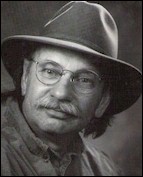 How I got a literary agent - An interview with author David C. Burton
How I got a literary agent - An interview with author David C. Burton How I got a literary agent - An interview with Mary Kilgore
How I got a literary agent - An interview with Mary Kilgore How I got a literary agent - An interview with author Rob Riley
How I got a literary agent - An interview with author Rob Riley Finding good literary agents
Finding good literary agents How I got a literary agent - An interview with author Frank Hotchkiss
How I got a literary agent - An interview with author Frank Hotchkiss How to publish a book: Finding an agent
How to publish a book: Finding an agent How to Query Your Sci-Fi/Fantasy Novel and Get Repped by a Literary Agent
How to Query Your Sci-Fi/Fantasy Novel and Get Repped by a Literary Agent Do I Need a Literary Agent?
Do I Need a Literary Agent? How I got a literary agent - An interview with author, Charles Heaton Allen
How I got a literary agent - An interview with author, Charles Heaton Allen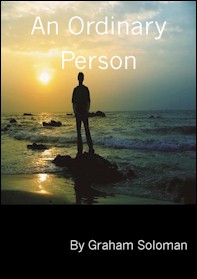 How I got a literary agent - An interview with author, Graham Soloman
How I got a literary agent - An interview with author, Graham Soloman New £10k writing prize launched at Sherborne Travel Writing Festival
New £10k writing prize launched at Sherborne Travel Writing Festival 9 Companies Hiring Remote Freelance Writers In 2025
9 Companies Hiring Remote Freelance Writers In 2025 University of Liverpool seeking literary stars for 500-word writing competition
University of Liverpool seeking literary stars for 500-word writing competition A look ahead to the 2025 Bournemouth Writing Festival
A look ahead to the 2025 Bournemouth Writing Festival Johnson & Alcock and New Writing North unveil new award for debut writers
Johnson & Alcock and New Writing North unveil new award for debut writers New Literary Agency Listing: Inspired Ink Literary
New Literary Agency Listing: Inspired Ink Literary Writing festival to host first naked workshop
Writing festival to host first naked workshop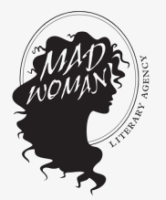 New Literary Agency Listing: Mad Woman Literary Agency
New Literary Agency Listing: Mad Woman Literary Agency The AI Romance Factory
The AI Romance Factory The Laurie Lee Prize for Writing: submissions now open
The Laurie Lee Prize for Writing: submissions now open Scandal-hit creative writing website NaNoWriMo to close after 20 years
Scandal-hit creative writing website NaNoWriMo to close after 20 years Bournemouth to host romance writing festival for writers
Bournemouth to host romance writing festival for writers New Publisher Listing: Adventure Books by Vertebrate Publishing
New Publisher Listing: Adventure Books by Vertebrate Publishing New Literary Agent Listing: Amandeep Singh
New Literary Agent Listing: Amandeep Singh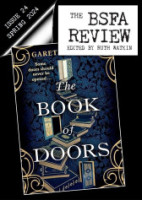 New Magazine Listing: The BSFA Review
New Magazine Listing: The BSFA Review
